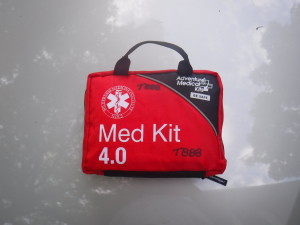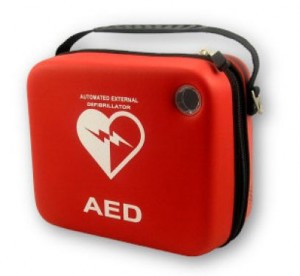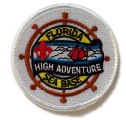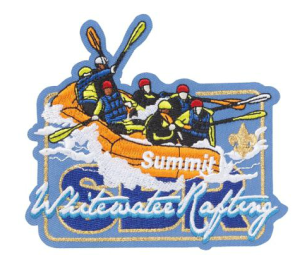Being able to provide reasonable medical care during an outdoor activity is one aspect of meeting the standard of care toward the participants, Scouts or adults.
BSA deals with this issue by requiring minimum medical certification standards for those attending its high adventure bases. However, the participant qualifications are not the same among BSA’s four high adventure bases (and may not be literally consistent with BSA‘s tour plan).
 As stated on its website, “Philmont requires that 2 members of each crew be certified in Wilderness First Aid and 2 members be certified in CPR. Any 2 youth or adult crew members could receive both certifications or 4 crew members could each receive 1 certification. Several hours may be required for Philmont staff to reach a remote backcountry location after a message is delivered to the nearest staffed camp. First aid and CPR training will result in proper and prompt attention being given to injuries and/or illnesses.”
As stated on its website, “Philmont requires that 2 members of each crew be certified in Wilderness First Aid and 2 members be certified in CPR. Any 2 youth or adult crew members could receive both certifications or 4 crew members could each receive 1 certification. Several hours may be required for Philmont staff to reach a remote backcountry location after a message is delivered to the nearest staffed camp. First aid and CPR training will result in proper and prompt attention being given to injuries and/or illnesses.”
By contrast, both BSA’s Northern Tier and Florida Sea Base programs require only a single adult to be certified in wilderness first aid and CPR certified, which could be two adults separately certified in each.
The difference between the two sets of leader qualifications is presumably the fact that Northern Tier crews are accompanied by a Northern Tier “interpreter”, and Florida Sea Base crews are accompanied by a Florida Sea Base “mate”, who may be able to serve as the second emergency medical-trained adult.
Per its website, the Summit Bechtel base similarly requires that “at least one participant, (adult or youth ) in each crew be currently certified in Wilderness First Aid or the equivalent* and CPR from the American Heart Association, the American Red Cross or the equivalent. It is recommended that each crew have at least two participants certified in Wilderness First Aid and CPR. If unforeseen circumstances prevent one of the WFA trained participants from attending you will have a second member with the qualifications.”
Summit Bechtel thus goes further afield than either Northern Tier or Florida Sea Base in permitting the single participant who is required to be certified in Wilderness First Aid and CPR to be one of the youth participants. But, unlike the other three high adventure bases, Summit Bechtel seems to require the at least one participant (adult or youth) to be certified in both Wilderness First Aid and CPR.
So, to summarize:
- Philmont requires two crew members to be certified in Wilderness First Aid and CPR, which may be any combination of adult or youth crew members separately certified in one or the other, for a minimum of two being certified, and up to four being certified, two each in one and two each in the other.
- Northern Tier requires at least one adult to be certified in Wilderness First Aid and CPR, which may be any combination of two adults, one being certified in one, and another being certified in the other.
- Florida Sea Base requires at least one adult to be certified in Wilderness First Aid and CPR, which may be any combination of two adults, one being certified in one, and one being certified in the other.
- Summit Bechtel requires at least one crew member to be certified in Wilderness First Aid and CPR, which crew member may be an adult or youth, but must presumably be certified in both.

To be sure, a prudent crew will ensure that each of its attending adult leaders are trained in both Wilderness First Aid and CPR, apart from any youth participants who are similarly trained.
As noted in Broze and Gronseth, “Sea Kayaker Deep Trouble” (1997), p. 177, “One of the most valuable lessons I learned from first aid training was that in a wilderness situation, one can easily die from an injury that would not be regarded as life-threatening if it happened somewhere less remote.”
In the final analysis, one or more participants should be trained in Wilderness First Aid and CPR who are sufficiently responsible, mature, and experienced to assume the required wilderness medical role on the trek. Whether youth or adult, the unit will have to live with their choice.
It should nonetheless be apparent that Wilderness First Aid and CPR skills are applicable to the unit’s year-round outdoor program apart from any requirement for attending a BSA high adventure base, and units should encourage/require such training on a regular basis for its adult leaders.
Note that it is BSA’s present position that “There are no unit-centric requirements at this time [for first aid, CPR, AED, or WFA].” (Guide to Safe Scouting) There are only high adventure program-based requirements.

However, BSA does state in the Guide to Safe Scouting that: “First aid and WFA are important to participants in BSA programs. The BSA strongly recommends that participants avail themselves of CPR with automatic external defibrillator (AED) training, along with first-aid and wilderness first-aid training. For certain program participation, there may be requirements for first aid, wilderness first aid, and CPR/AED.”
While there may not be any BSA requirement that first aid training be “unit-centric”, a unit’s duty of care should require that its adult leaders have some basic first aid qualifications.
Because, sometimes bad things happen, and a group may or may not always be able to rely on others for assistance, or may need to provide assistance to others, as shown by this story!
Be Prepared!



